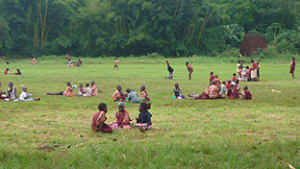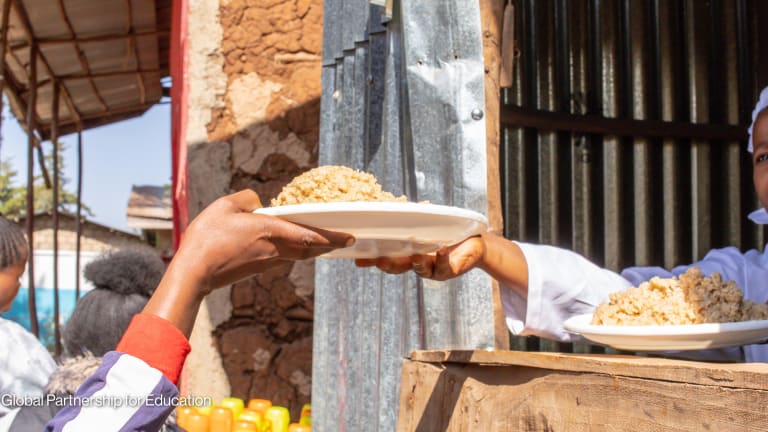
This blog post is co-written by Moses Tenywa, a professor at Makerere University and the Humidtropics action site facilitator in Uganda.
Poor soils make people poor. The people living in the area that borders Lake Victoria in Uganda know this for a fact: They have seen maize yields on their small plots of land dwindle, as they can often not afford the fertilizer the nitrogen-hungry crop requires to grow strong. Income and nutrition levels drop. The community faces a struggle to escape from poverty.
Yet a Humidtropics intervention led by the International Institute of Tropical Agriculture that takes an integrated approach to tackling the triple challenge of poverty, hunger and environmental degradation all at once has offered hope, by turning to an unlikely hero: soybean. With the help of partners such as the national research organizations of Uganda, development partners such as World Vision and Bioversity International and with help from the local government the humble soybean has helped to transform lands and livelihoods.
As a legume, soybean naturally fixes nitrogen to soil, a nutrient sorely needed in the degraded lands of this region. This leaves the land capable of nourishing maize crops planted either at a later date or alongside the soybean. During a trial period in the Kiboga district, soybean yields were abundant, but this presented new challenges. Farmers did not know how to process this new crop, and as demand for soybean seed increased, so did the challenge for farmers to access quality seeds, since the local market is poorly developed.
To combat this, Humidtropics researchers enlisted the help of both the public, and the private sector. In September 2014, Makarere University taught local groups how to multiply quality seeds and how to utilize soybean in the household.

One man who participated in this training, Majid, is a school headmaster. After what he learned about the uses and nutritional quality of soybean, he decided to include soy in the maize porridge the children at his school were served at breaktime and lunch. Local government learned about the lessons and brought the headteachers of district schools together to make it a practice adopted across the region. This strategy is now being adopted in schools across the area to improve the nutrition levels of children and subsequently their performance at school.
Private firm SESACO was originally contacted by IITA to buy the soybean farmers were producing. However, it was soon discovered that the company could pass on valuable skills on how to process the soybean into other products such as soymilk. This has not only guaranteed the company a steady supply of good quality soybean, but has boosted farmer incomes, as they now have a new product to sell. Bioversity International later picked up the baton to train farmers in processing and packaging of soybean products, with much success.
Another added benefit of embracing soybean has been the quality feed it can supply for livestock. Many Ugandan farmers have opted to not keep chickens and pigs that can provide extra income and nutrition for their families as they cannot feed them. The new influx of quality soybean has changed this story.
In addition, the Mukono district, that borders Kampala town, is home to many chicken and pig producers, who cater to the demand for meat in the nearby urban center. Upon hearing about this new supply of soybean in nearby Kiboga that would make ideal feed for its livestock, the local government became an eager new customer. This has opened up an exciting new opportunity for young entrepreneurs, who can capitalize on the new need to trade the soybean from Kiboga to Mukono.
This story encapsulates how the three challenges of poverty, hunger and environmental degradation can be tackled with an integrated system approach. Agricultural scientists and researchers from more than 30 nations gathered in Ibadan, Nigeria, last week to highlight how approaches such as this can deliver on the new sustainable development goals, outlined by the United Nations, for poverty reduction, food security and improved livelihoods.
By bringing together scientists, farmers, the public and private sector, solutions like this can be uncovered, changing farmers’ lives by leaving them with more income, well-fed families and an improved natural resource base for the future.
Do you agree? Share your thoughts by leaving a comment below.
Join the Devex community and access more in-depth analysis, breaking news and business advice — and a host of other services — on international development, humanitarian aid and global health.








